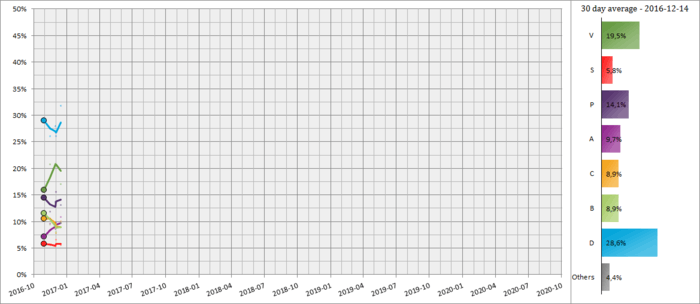Next Icelandic parliamentary election
| | |||||||||||||||||||||||||||||||||||||||||||||||||||||||||||||||||||||||||||||||||||||
| |||||||||||||||||||||||||||||||||||||||||||||||||||||||||||||||||||||||||||||||||||||
| |||||||||||||||||||||||||||||||||||||||||||||||||||||||||||||||||||||||||||||||||||||
| |||||||||||||||||||||||||||||||||||||||||||||||||||||||||||||||||||||||||||||||||||||
 |
| This article is part of a series on the politics and government of Iceland |
| Constitution |
|
Institutions |
|
Parliamentary elections are due to be held in Iceland by 29 October 2020, but may be held earlier if a government is unable to be formed following the 2016 elections.
Electoral system
The 63 members of the Althing are elected using closed list proportional representation in multi-member constituencies of 8 to 13 seats.[1] Of the 63 seats, 54 are elected using constituency results and determined using the d'Hondt method. The remaining nine supplementary seats are awarded to parties that crossed the 5% national electoral threshold in order to give them a total number of seats equivalent to their national share of the vote.[1]
Opinion polls

| Institute | Release date | V | S | P | A | C | B | D | Others |
|---|---|---|---|---|---|---|---|---|---|
| Gallup | 2 Dec 2016 | 20.9% | 5.3% | 13.7% | 8.6% | 8.9% | 9.0% | 28.0% | 5.6% |
| MMR | 14 Nov 2016 | 20.7% | 5.6% | 11.9% | 9.6% | 10.6% | 9.4% | 26.0% | 6.2% |
| 2016 result | 29 Oct 2016 | 15.9% | 5.7% | 14.5% | 7.2% | 10.5% | 11.5% | 29.0% | 5.7% |
Footnotes
- ↑ The Pirate Party does not have formal leadership, but Birgitta is chair of the Parliamentary party.
References
- 1 2 Electoral system IPU
This article is issued from Wikipedia - version of the 12/5/2016. The text is available under the Creative Commons Attribution/Share Alike but additional terms may apply for the media files.



.png)
.jpg)
